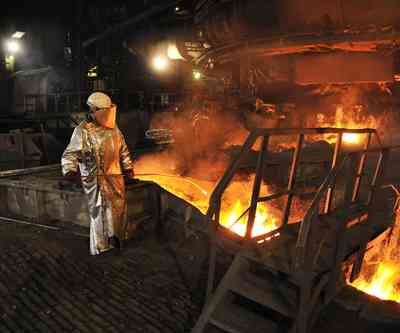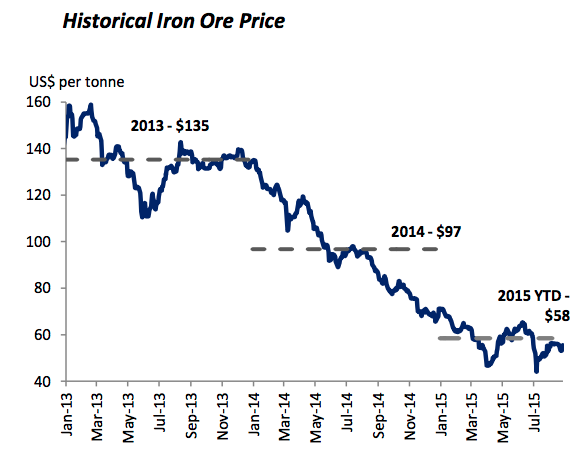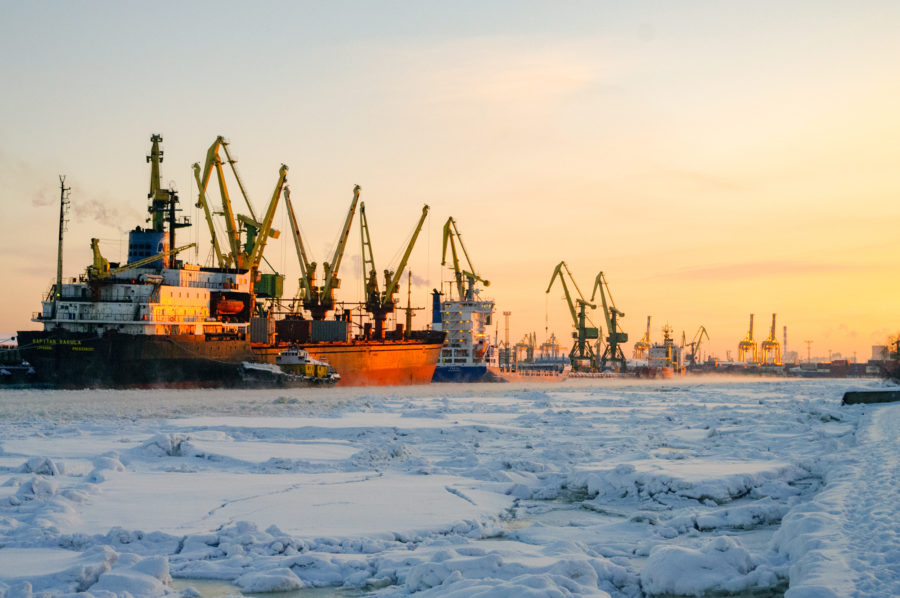Iron ore price extends gains

The price of iron ore built on gains on Wednesday with the market for the steelmaking raw material seemingly more immune from the China-induced panic on equity and commodity markets than the likes of copper.
The benchmark 62% Fe import price including freight and insurance at the Chinese port of Tianjin added 0.2% at $55.80 a tonne, a two-week high according to data provided by The SteelIndex. Iron ore is now trading more than 26% above record lows for the spot market hit July 8, but down more than 20% year to date.
The recovery also comes despite Chinese steel prices that continue to languish near record lows with rebar contracts on the Shanghai Futures Exchange trading at $307 a tonne after dipping to a record low just below $300 last week.
“Iron ore inventories both at ports and steel mills are relatively low, while shipment to China is expected to remain lean over the next two weeks, supporting spot prices,” Li Wenjing, an analyst with Industrial Futures in Shanghai told Reuters.
Most analysts predict further declines in the price for the rest of the year and beyond. Iron ore should average $50 a tonne in the third quarter according to investment bank Morgan Stanley – that implies a September average price of $43.
Standard & Poor’s this week revised upwards its price assumption for the year to $50 from $45 before, but the ratings agency no longer sees a recovery in 2017 and expects the price to stay steady at $50 for the next two years.
Goldman Sachs expects prices to fall 30% over the next 18 months hitting $44 by the second quarter of next year calling summer 2015 “the calm before the storm.”
The negative outlook is mainly due to further supply growth from the major producers in Australia (Australia’s 55 million tonne per year Roy Hill mine begins shipping in October) and Brazil and a slowdown in Chinese steelmaking which accounts for almost half the global total.
According to China’s National Bureau of Statistics crude steel output declined 4.6% year-on-year in July after daily crude steel output dropped 8% month on month. World steel output was also dragged down as a results with global production slipping 3.8% year on year in July.
While world number two mining company Rio Tinto’s internal forecasts says China will hit 1 billion tonnes of crude steel output by 2030 and BHP Billiton predicts a peak in 2020 of between 935–985 million tonnes, but others are not so sanguine.
Investec, an investment bank in London, said China’s steel consumption peaked in 2014, a view shared by the Chinese government’s top steel-industry forecaster.

Source: Singapore Exchange
{{ commodity.name }}
{{ post.title }}
{{ post.date }}

2 Comments
jimmy
Mining.com journalists lack professionalism with their failure to check spelling and grammar in most of their articles. It’s rather annoying to read poorly written articles. Please improve….
nick kelly
Would you rather have a piece that is informative with a few errors that don’t obfuscate meaning, or a piece of Fed speak without any of same that is meaningless?
The piece is intended to inform about MINING.
English Teacher